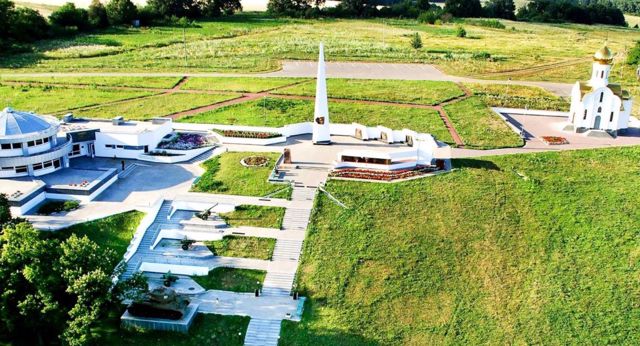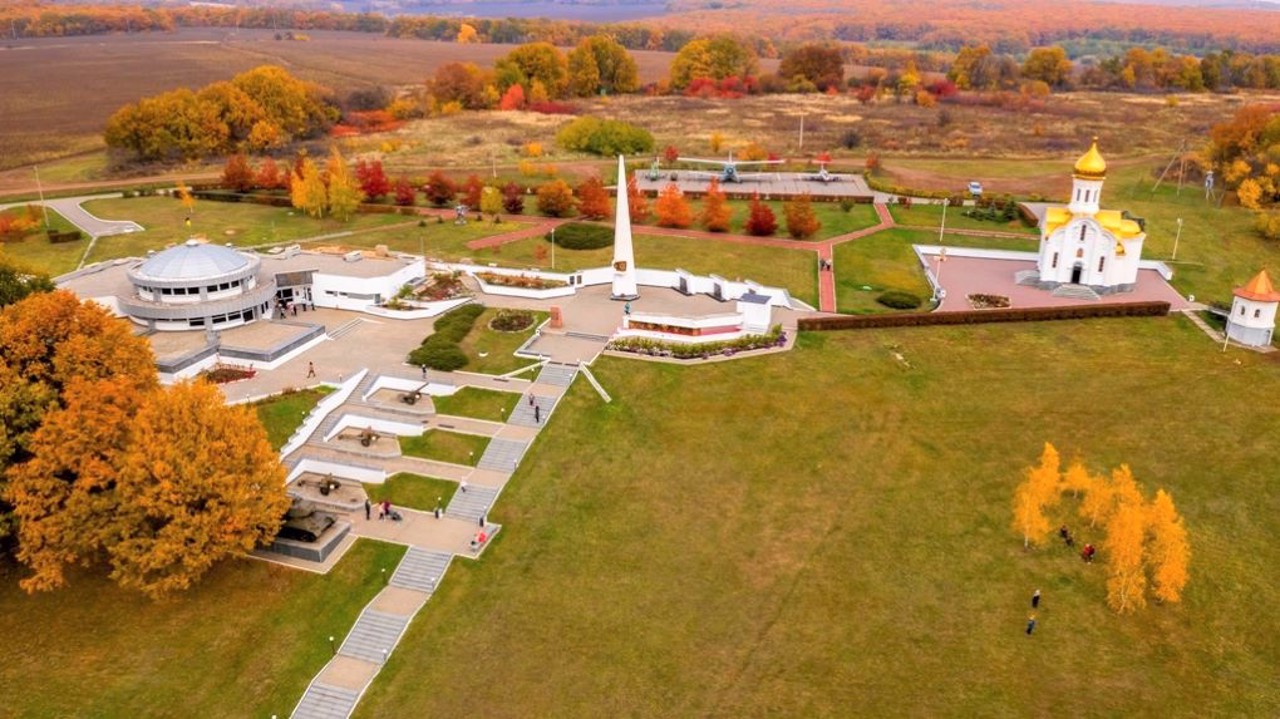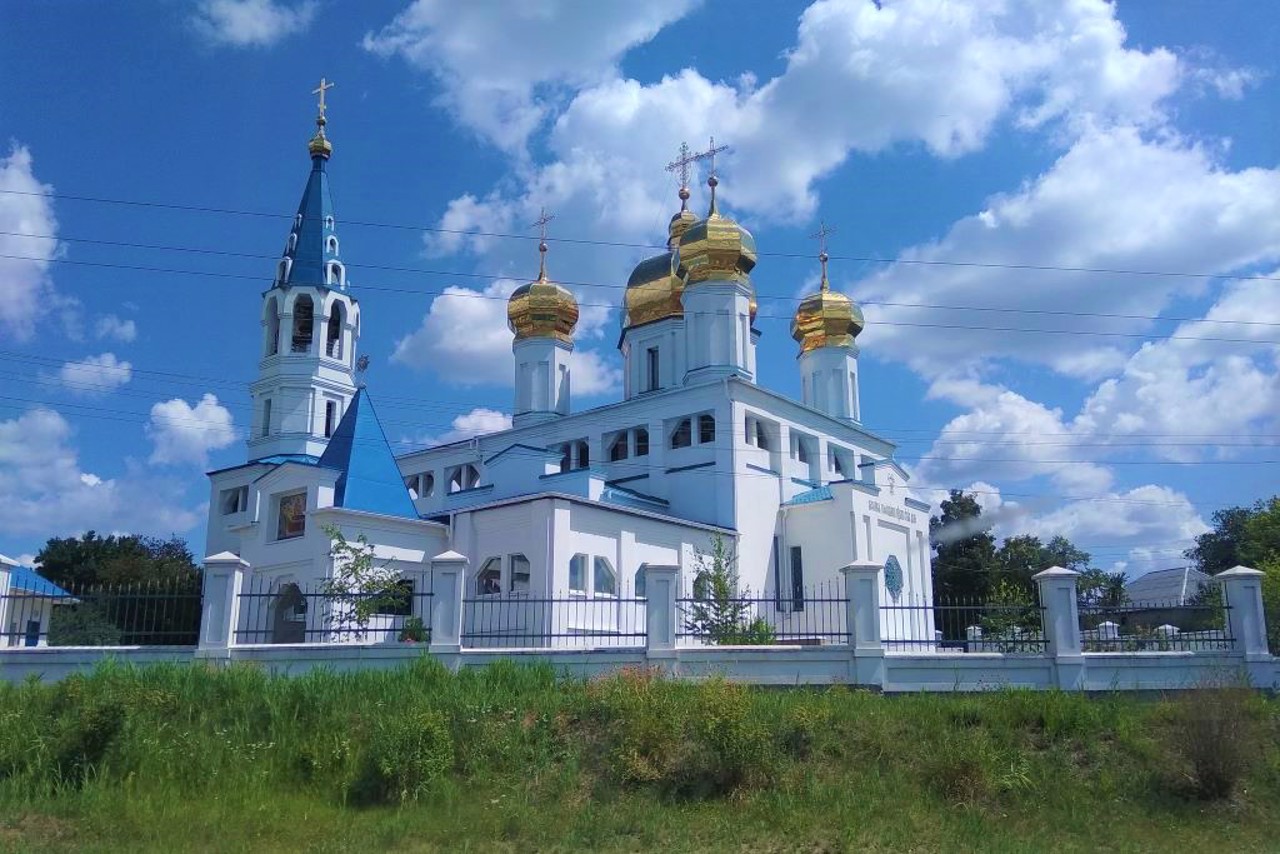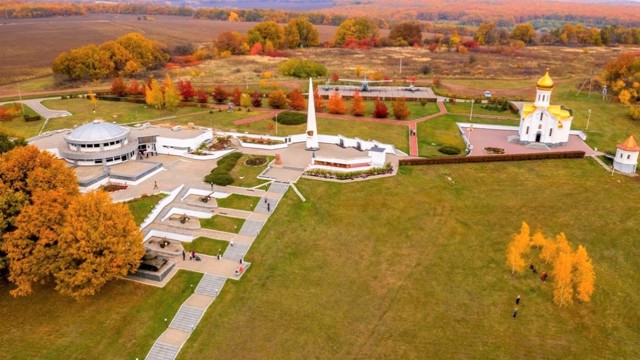Functional temporarily unavailable
Solonytsivka
Travel guide online Solonytsivka
General information about Solonytsivka
The town Solonytsivka is located on the Uda River, on the Kharkiv-Sumi highway, a few kilometers west of Kharkiv.
The village of Sinolitsevka arose in the 17th century, and in 1650 the village of Sinolitsevka (later Solonytsivka) was formed, and the wooden Saint Nicolas Church was built.
In 1663, the Kuryazh monastery was founded by Kharkiv colonel Hryhoriy Donets-Zakharzhevskyi. Its main church - the Cathedral of the Transfiguration of the Lord - was converted into a warehouse in 1930, and a correctional labor colony is still located on the territory of the monastery (here Anton Makarenko carried out the first experience of mass re-education of delinquent children).
In 1943, the Soviet army launc ...
The town Solonytsivka is located on the Uda River, on the Kharkiv-Sumi highway, a few kilometers west of Kharkiv.
The village of Sinolitsevka arose in the 17th century, and in 1650 the village of Sinolitsevka (later Solonytsivka) was formed, and the wooden Saint Nicolas Church was built.
In 1663, the Kuryazh monastery was founded by Kharkiv colonel Hryhoriy Donets-Zakharzhevskyi. Its main church - the Cathedral of the Transfiguration of the Lord - was converted into a warehouse in 1930, and a correctional labor colony is still located on the territory of the monastery (here Anton Makarenko carried out the first experience of mass re-education of delinquent children).
In 1943, the Soviet army launched an offensive on Kharkiv from the heights in the Solonytsivka area, where Marshal Ivan Konev command post was located. The "Height of Marshal Konev" memorial complex is a venue for events dedicated to the Second World War.
Селище Солоницівка розташоване на річці Уда, на трасі Харків-Суми в декількох кілометрах на захід від Харкова.
Хутір Сіноліцевка виник в XVII сторіччі, а в 1650 році було утворене село Сіноліцевка (потім - Солоницівка), побудована дерев'яна Миколаївська церква.
В 1663 році харківським полковником Григорієм Донець-Захаржевським заснований Курязький монастир. Його головний храм - собор Преображення Господнього - в 1930 році був перетворений на господарський склад, а на території монастиря досі перебуває виправно-трудова колонія (тут Антон Макаренко здійснив перший досвід масового перевиховання дітей-правопорушників).
В 1943 році з висот в районі Солоницівки радянська армія почала наступ на Харкі ...
Селище Солоницівка розташоване на річці Уда, на трасі Харків-Суми в декількох кілометрах на захід від Харкова.
Хутір Сіноліцевка виник в XVII сторіччі, а в 1650 році було утворене село Сіноліцевка (потім - Солоницівка), побудована дерев'яна Миколаївська церква.
В 1663 році харківським полковником Григорієм Донець-Захаржевським заснований Курязький монастир. Його головний храм - собор Преображення Господнього - в 1930 році був перетворений на господарський склад, а на території монастиря досі перебуває виправно-трудова колонія (тут Антон Макаренко здійснив перший досвід масового перевиховання дітей-правопорушників).
В 1943 році з висот в районі Солоницівки радянська армія почала наступ на Харків, тут знаходився командний пункт маршала Івана Конєва. Меморіальний комплекс "Висота маршала Конєва" є місцем проведення заходів, присвячених Другій світовій війні.
Сплануй своє перебування у Solonytsivka
What to see and where to go in Solonytsivka
Tourist attractions and museums of Solonytsivka

Military History of Slobozhanshchyna National Museum
Museum / gallery , Monument
The National Museum of Military History of Slobozhanshchyna was opened in Solonytsivka in 1965 as the National Memorial Complex "Marshal Konev Height". In 2003, on the eve of the 60th anniversary of the liberation of Kharkiv from the German fascist invaders, a complete reconstruction was carried out. In January 2025, during the decommunization of Ukraine, the name was changed from "National Memorial Complex "Marshal Konev Height" to "National Museum of Military History of Slobozhanshchyna".
In 1943, the headquarters of the Steppe Front commander was located here, from where Marshal Konev gave the order for the night assault on Kharkiv, and the next day the city was liberated. About half a million soldiers died in the battle, but this operation initiated the liberation of all of Ukraine.
The complex includes a 17.5-meter-high stele, an exhibition of military equipment, a chapel in honor of John the Warrior, and a museum complex.
The exposition of the National Museum of Military History of Slobozhanshchyna presents artifacts from the times of Soviet and German occupation, models of equipment, tanks and steam locomotives, tools, archival photographs, documents, postcards, books, Ukrainian clothing and towels, uniforms of soldiers of the Soviet, Polish and Nazi armies, weapons of different countries, shells, bombs, bullets, medals and badges, miniatures of rooms with old furniture, maps, paintings and portraits, sailors' uniforms, sea mines, boats, fragments of aircraft shells and equipment, part of the decoration of the Reichstag building, exhibits dedicated to the Holocaust and camps, prisoners' uniforms and clothing.
A separate hall of the museum is devoted to exhibits of the Afghan War: paintings, weapons, military uniforms and clothing of local residents.
There is also a large exhibition dedicated to the modern Russian-Ukrainian war, the defense of Donetsk airport. The halls display uniforms, weapons, shell fragments, medals and awards, models of modern military equipment and flags.
Solonytsivka on photo and video
Reviews Solonytsivka
Geographical information about Solonytsivka
| {{itemKey}} | {{itemValue}} |
|---|---|
| Region |
Kharkiv |






